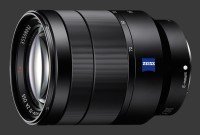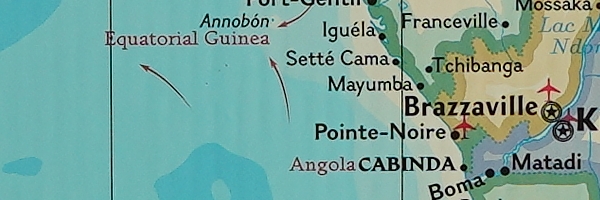Sony FE 20-70mm F/4G Review
Introduction
The newest Sony zoom lens offers the rare capability of capturing both an extremely-wide perspective and a moderately tight angle-of-view. It is the only such lens in the Sony lineup and the sole option for Sony E-mount. This makes it unique and is a dream range for many photographers.
The Sony FE 20-70mm F/4G is designed for Sony Full-Frame Mirrorless Digital Cameras with its short flange distance and large imaging circle. It can also be used on Sony APS-C cameras where it would act as a 30-105mm lens, also a unique range for cropped-sensor cameras. This is a premium lens, indicated by the G suffix in its name, with high-end optics in a weatherproof body.

In addition to spanning an impressive 94-34° field-of-view, the unique optics in the Sony FE 20-70mm F/4G have a maximum magnification of 0.39X when it focuses down to its minimal distance of 25cm at 70mm, while it can focus down to 30cm at 20mm. This provides closer locus than most zooms. This lens packs plenty of features which are covered further down below in this review.
Early in the days of the Sony Full-Frame mirrorless platform, Sony teamed up with veteran lens-manufacturer Carl Zeiss to produced the Sony FE Vario-Tessar T* 24-70mm F/4 ZA OSS
Sony FE Vario-Tessar T* 24-70mm F/4 ZA OSS, an incredibly light general purpose lens that weighs just 426g and was the first weatherproof Sony FE lens. Although impressive back in 2013, its resolution no longer holds up to most modern digital cameras. The new FE2 20-70mm F/4G captures a much wider angle-of-view, while weighing just 60g more.
The true challenger to the Sony FE 20-70mm F/4G is the Sony FE 24-105mm F/4G OSS workhorse lens. This highly anticipated lens launched in 2017 and quickly became one of the most versatile lenses native to the Sony FE mount. Read the full-review of the FE 24-105mm F/4G OSS for more information. The difference is simply a trade-off between wide and telephoto reach. Both these lenses can capture any field-of-view between 84° and 34°. The newer 20-70mm expands the wide-end to 94°, while the 24-105mm reaches 23°. Note that 10° is a much more significant difference on the wide side, plus one can crop to tighten an image at the expense of resolution. Stitching images is harder and more restrictive to produce an image with a wider field-of-view.
Sony FE 20-70mm F/4G Review
The Sony FE 20-70mm F/4G is now the most versatile FE lens on the market. Its extremely wide field-of-view is well-suited for photographing architecture, sweeping vistas, monuments and interior photos in tight places. The middle of its range is excellent for casual photography of daily life, environmental or group portraits and events. The narrow end can capture good portraits and closeups, more so due to its high 0.39X maximum magnification. Its field-of-view works really well for street photography and can even handle astrophotography.
With a constant maximum aperture of F/4 across the zoom range, this lens captures a decent amount of light at any focal-length. This is certainly not considered bright yet very few zoom lenses have more than a stop of advantage. Modern mirrorless digital cameras have extremely effective image-stabilization systems, much better than any lens-based mechanism, which allows this lens to be easily used in low-light for relatively still subjects.
Wide lenses nearly always capture an expansive depth-of-field. Using the FE 20-70mm F/4G, it is possible to isolate a subject from the background by shooting at a close distance towards the long end of the zoom. A 9-blade iris makes bokeh look smooth. The front of the lens is equipped with a 72mm thread to accept standard screw-in filters and a bayonet to attach the included lens hood.

Construction
Sony built the FE 20-70mm F/4G from sturdy high-grade plastic. Its barrel is mostly cylindrical with a diameter of 8cm. Near the back, a 45° angle slant leads to a narrower 6cm segment which lines up to the width of the Sony E-mount. The 10cm length of this lens make it feel very dense and solid. Although it is slightly heavier than the Version-Tessar T* 24-70mm F/4 ZA OSS, it is lighter than the FE 24-105mm F/4G OSS by over 35%!
An inner barrel extends 4½cm when the lens is zoomed to 70mm. It fits the outer barrel with a tight tolerance and remains completely steady. There is no zoom creep when carrying this lens. Focusing is completely internal and does not affect the length of the barrel, nor does it cause the front element to rotate. In Autofocus mode, turning the focus-ring has no effect.
A 1½cm space separates the focus-ring from a wider zoom ring. This ring operates smoothly with a moderate amount of resistance and takes the lens from one extreme of the focal-range to the other with a 90° rotation. Markings for standard focal-lengths turn with the ring. A slim gap separates the Zoom Ring from the aperture-ring. The aperture-ring has an automatic detent plus one for every third-stop from F/4 to F/22. Detents give a moderate amount of resistance and is more pronounced between A and F/22. A small lock at the base of the aperture-ring locks it in Automatic position. Note that this A position signifies the aperture is under control of the camera, it will only be automatically set when the camera is set to Auto, Program or Shutter-Priority mode. On the opposite side of the lens barrel, another switch toggle aperture detents.

Back to the space separating the Focus-Ring from the Zoom-Ring. This section holds a standard AF/MF sliding switch, plus two custom buttons configured by the camera. Only one feature gets assigned to these buttons. There are two to make it easy to access in both landscape and portrait orientation. Both buttons have the same nice springy feel. This lens offers every essential feature of a premium lens.
The front of the FE 20-70mm F/4G features a bayonet mount to attach the included petal-type lens hood and is threaded to accept standard 72mm filters. The external zoom mechanism carries along the hood. The majority of zoom lenses operate this way. The hood itself is made of rigid plastic, similar to the lens barrel.
Sony FE 20-70mm F/4G Sharpness
Optics for zoom lenses are challenging to design, particularly considering that extremely-wide lenses typically use completely different optical formulas from normal ones. Sony engineers had to come up with a set of optical elements that can handle both extremes while remaining sharp throughout a 20-70mm zoom range.
Central sharpness of the Sony FE 20-70mm F/4G is exemplary. Fine details are captured with great accuracy in the central portion of images. From wide-angle to the long end, images are sharp even wide-open. At its widest focal-length, the FE 20-70mm F/4G shows maximum sharpness from F/4 which is extremely impressive From the middle of the zoom range onward, the center stays sharp wide open with just a hint of softness that goes away stopped-down by a ½-stop to F/4.5.
Sharpness is completely consistent from F/4.5 to F/11. When mounted on a 61 Megapixels Sony Alpha A7R V, diffraction hits at F/13, causing generalized softness. Nothing can be done about this since diffraction is caused by physical properties of light.
Image corners are rarely as sharp as the center on most lenses, yet the Sony FE 20-70mm F/4G manages an exceptional performance. Extreme corners show visible softness wide-open at wide-angle. Stopping down very gradually increases sharpness from F/4 to F/9.5. Large prints show sharp corners at F/5.6 but poster-size photos require F/6.7 or F/8 to look completely sharp.
The middle of the zoom range follows shows similar sharpness. Extreme corners look soft at F/4 They become really sharp at F/5.6 and improve even further all the way to F/8. The widest stop should be avoided when making poster-sized prints. At 70mm, observed sharpness exhibits the same properties. This time, F/5.6 is sharp enough for enormous prints, F/6.7 is better and F/8 is razor-sharp.
Performance
Geometry is captured perfectly by the Sony FE 20-70mm F/4G. Lines are rendered completely straight and there is no measurable distortion at any combination of focal-length and aperture. This is too-good-to-be-true and Sony may be forcing hidden distortion correction. On a Alpha A7R IV
Sony Alpha A7R IV, there is no control over distortion correction when this lens is mounted. While this can reduce critical sharpness, on a mirrorless at least it does not affect framing, as it would on a DSLR.
Chromatic aberrations are absent from images captured by the FE 20-70mm F/4G. In cases where edge contrast is absolutely extreme, some slight color-fringing may appear, yet it is absolutely minimal. Color and contrast are rendered remarkably well by this lens. Sony lens coatings show excellent quality and, in this case, cameras do not force automatic software removal of chromatic aberrations.
The Sony FE 20-70mm F/4G manages flare extremely well. Even when a bright light source appears within the frame, there flares rarely appear and overall contrast is maintained. The included lens hood provides some protection at wider focal-lengths. Bokeh is rendered really smoothly by the 9-blade aperture in this zoom lens.

Vignetting is clearly an issue for this lens. There is a severe brightness falloff towards corners which the camera is unable to correct at this time. This result in corners that appear a full-stop darker than the center of images. It is easy to correct for vignetting using software with minimal impact to image-quality, so a future firmware could produce better results. Currently, most optic-aware image-processing software can remove this vignetting.
Similarly to the majority of wide lenses, stopping down the aperture improves vignetting. While we see over a stop of shading at F/4, closing down the aperture to F/5.6 brings it to a reasonable 1/3-stop. Another stop further down virtually does away with vignetting. Towards the second-half of the zoom, vignetting is definitively less pronounced yet still requires at least F/5.6 for it not to be easily noticeable.

Autofocus performance is impeccable. This lens focuses on any subject nearly instantly, even when contrast is low. When light levels drop, the lens naturally takes a little longer to focus yet it locks focus accurately with great consistency. The internal focus motor, which only moves internal elements to focus, of the FE 20-70mm F/4G is completely silent. There are very few moments of focus hesitation. Minimal back-and-forth movements are only noticeable at close focusing distances in moderately low light.
Autofocus is virtually silent thanks to the internal structure of the focus drive. Even manual focus is completely quiet since it is driven by the same mechanism. The fly-by-wire focus-ring is extremely responsive and feels continuous throughout the focusing-range. Custom lens buttons respond quickly too.
Conclusion
A unique focal-range makes the Sony FE 20-70mm F/4G the most versatile E-Mount lens on the market for Full-Frame Mirrorless Digital Cameras. Combined with a constant maximum aperture and close focusing distance throughout its zoom range, this lens covers an incredible variety of photographic subjects. The ultra-wide angle capability of the FE 20-70mm, truly sets it apart from other zoom lenses.
Versatile lenses must make compromises to optimize image-quality while maintaining flexibility and limiting bulk. Sony balanced these constraints extremely well with this lens, obtaining a a solid all-around performance. The optics in FE 20-70mm produce sharp images in the central area of images even with the aperture wide-open. At corners, fine details are on the soft side wide-open and even one stop down from there. Another stop is required to obtain truly sharp corners. This effect is more pronounced near the wide-end of the zoom-range. Compared to the longer Sony 24-105mm F/4G OSS, images captured using the FE 20-70mm definitely have softer corners.
Nearly every other aspect of optical-quality is impeccable. Throughout its zoom-range, there is no measurable distortion. Chromatic aberrations only show along edges of extreme contrast. Color and contrast are captured extremely well and this lens keeps flare well under control. Even against backlit situations, the FE 20-70mm F/4G resists flare very well. The one true issue with this lens is its extreme vignetting which is dramatically apparent at bright apertures. One must stop down by over a full-stop to avoid unnatural-looking images, even with in-camera vignetting correction enabled. This phenomenon is correctable via imaging software with minimal impact on image-quality yet it adds a step to the Digital Photography Workflow which is less than ideal.
Autofocus is very quick and highly accurate with the Sony FE 20-70mm. It locks focus smoothly with completely silently. The mechanics of this lens are exemplary. Both the mechanical zoom-ring and fly-by-wire focus rings rotate smoothly. There is also a mechanical aperture-ring for those who prefer and are used to working in 1/3-stops. The aperture-ring can be locked to avoid unintentional changes or declicked for obtain smooth stepless transitions. Build quality and weatherproofing match other high-end Sony lenses.
Clearly, the Sony FE 20-70mm F/4G is an impressive lens with no direct competitors. By spanning an extreme wide-angle of 94° to a medium 34° field-of-view, this lens is highly suitable for a huge range of photographic subjects, including architecture, landscape, night say, cityscapes, interiors and scenes of daily life. It can handle closeups, group photography and some portraiture. This unique versatility makes the 20-70mm F/4G one of the best Travel Photography lenses around. Its strong vignetting though is definitely something to consider for those that capture large volumes of images since it does require additional effort to compensate for.

Please Support Neocamera
All information on Neocamera is provided free of charge yet running this website is a huge endeavor. Purchases made via affiliate links found throughout the site help keep it running and up-to-date. There is no additional cost to you, so please consider buying via these links to our affilates:
Thank you for your support!
Updates
2025.11.13

Best Gifts for Photographers in 2025 by Budget
The annual Neocamera Photography Gift Guide updated to 2025. Find great gifts for photographers with any price budget.
2025.07.07

Stellar Photo Recovery Review
Review of Stellar Photo Recovery V12. This Windows and MacOS software can recover photos and videos in a huge number of formats from memory cards, USB drives, SSDs and HHDs.
2025.05.14

Huion Kamvas 13 Gen 3 Review
In-Depth review of the Huion Kamvas 13 Gen 3 Pen Display Tablet for photographers and graphic artists.
2025.01.18

Fujifilm GFX 2025 Lens Roundup
Lens Review roundup of Fujifilm GFX Medium-Format lenses. Quality, performance and handling of the GF20-35mm F/4R WR, GF30mm F/3.5 Tilt-Shift and the GF55mm F/1.7.
2024.11.18

Best 2024 Photography Gifts for Every Budget
Great gifts for photographers and photo enthusiasts selected for every budget among the best products of 2024.
2024.08.07

Eye Protection Tips for Professional Photographers
The four main considerations for professional photographers regarding eyewear.
2024.07.14

Fujifilm X100VI Review
Flagship fixed-lens compact digital camera with a 40 MP sensor and Image-Stabilization, a first for the series. Retro design featuring dual control-dials, plus direct ISO, Shutter-Speed and EC dials. Its hybrid viewfinder can switch between EVF and OVF mode.
2024.05.09

Fujifilm GFX100 II Review
Flagship 102 Megapixels Medium-Format Mirrorless Digital Camera with 8-Stop 5-Axis IBIS, 8 FPS Drive, 8K Video and 400 MP Super-Resolution capture in a weatherproof and freezeproof body with dual control-dials and dual memory-card slots.
2024.04.03

Fujifilm X-T5 Review
Newest Fujifilm flagship boasting a 40 MP APS-C sensor, 5-axis IBIS with 7-stop efficiency, 15 FPS continuous drive, 6.2K Video capture, dual control-dials and dual SDXC UHS-II slots in a sturdy weatherproof and freezeproof body.
2023.11.20

Best Digital Cameras of 2023
Find out which are the Best Digital Cameras of 2023. All the new Mirrorless Digital Cameras from entry-level to high-end professional.
2023.07.10

Fujifilm X-H2 Review
40 Megapixels APS-C Hybrid Mirrorless Digital Camera with 7-stop IBIS. Fastest shutter ever and 8K video capture. Large builtin EVF with 0.8X magnification and 5.8 MP, plus an Eye-Start Sensor. Packed with features and large number of controls in a weatherproof and freezeproof body.
2023.05.07

Sony FE 20-70mm F/4G Review
Review of the unique Sony FE 20-70mm F/4G lens. The optical zoom of this lens spans ultra-wide-angle and medium focal-length coverage, making it one of the most versatile Full-Frame lenses on the market.
2025.11.13
2025.07.07
2025.05.14
2025.01.18
2024.11.18
2024.08.07
2024.07.14
2024.05.09
2024.04.03
2023.11.20
2023.07.10
2023.05.07
NEWS
2025.12.02

Sony Upgrades Alpha 7 to 5th Generation
Digital Camera ○ Lens
2025.11.29

Venus Optics Releases New Zero-D Tilt-Shift Macro Lens
Lens
2025.11.23

Best Digital Cameras of 2025
Digital Camera
2025.11.14

Photography Gift Guide 2025 Edition
2025.11.06

Canon Announces Third-Generation R6 Mirrorless
Digital Camera ○ Lens
2025.10.23

Fujifilm Launches X-T30 III Plus New Wide Zoom
Digital Camera ○ Lens
2025.10.21

Peak Design Unveils Field Plate and Form Straps
2025.10.16

Nikon Unveils Z-Mount DX Lens Duo
Lens
2025.10.16

Venus Optics Unveils Fast Telephoto Prime Lens
Lens
2025.10.01

Think Tank Photo FocusPoint RollTop Backpacks
Bag
2025.09.30

Sony Produces Super Macro GMaster Lens
Lens
2025.09.17

Venus Optics Created First Telephoto Ultra-Macro Lens
Lens


















